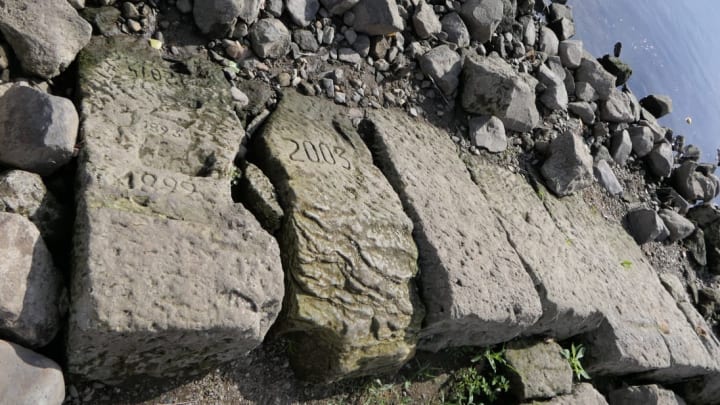Ancient stones bearing ominous phrases in German—like "When you see me, weep"—have resurfaced along a river bed in the Czech Republic, the Associated Press reports.
The oldest marking on one of these "hunger stones," as they're called, dates back to 1616. They're usually concealed by the Elbe River, but sweltering temperatures and drought across Central Europe have led to lower water levels, exposing the cryptic inscriptions once again.
Drought reveals ancient ‘hunger stones’ in European river: https://t.co/7oI9GIFnoN | Photos Petr David Josek pic.twitter.com/6ziTWZsjVe
— AP Images (@AP_Images) August 23, 2018
Known as hungerstein in German, the stones have historically been used to record low water levels and warn future generations of drought, bad harvests, and tough times ahead. Inscriptions also recorded the date and struggles of that period, such as a lack of food, high prices, and, of course, hunger.
More than a dozen hunger stones are now visible in the town of Decin near the Czech-German border. The one that urges observers to "weep" has become a tourist attraction.
Due to the construction of a dam in 1926, the rock reappears more frequently than it once did—showing its face 126 days per year, on average—but the river's water levels are especially low this summer.
As Smithsonian Magazine points out, this isn't the first archaeological site to be exposed by the heat, either. So far this summer, the drought has revealed a 4500-year-old henge in Ireland, a 17th-century garden in England, and a once-submerged village in Germany.
[h/t Science Alert]
